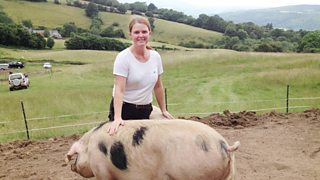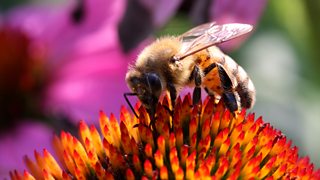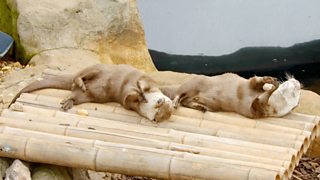From snorts to snouts: ten facts about pigs
On Your Farm has been finding out all about our snout-ed buddies. Pigs are clean, intelligent animals and you can tell the speed of one by looking at its ears.
Here's what we have learnt about pigs - from their blatant disregard of vegetable patches to their skills as escapologists.
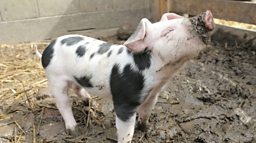
1. There are 11 native British pig breeds and all of them are at risk of extinction according to the Rare Breeds Survival Trust. Most pork and bacon comes from cross-bred hybrid pigs which started to be introduced in the 1950s, pushing out the native breeds.
2. Breeds with floppy ‘lop’ ears, like Gloucestershire Old Spots or Saddlebacks, are thought to be more docile than breeds with ears with sticking up ‘prick’ ears, like the Tamworth. The lop eared breeds’ vision is obscured, so they don’t run as fast!
3: The Tamworth pig breed was developed on the estate of Sir Robert Peel. His other notable invention: the police force.
4. Gloucestershire Old Spots were known as The Orchard Pig because they were often kept among apple trees, where they’d happily hoover up the windfalls.
5. Despite their reputation as dirty animals pigs are actually very clean. They will choose a small area of their enclosure as a latrine and always dung there, and nowhere else.

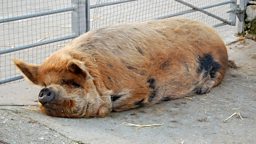
6. Although the native breeds are quite hardy, pigs do not appreciate extremes of temperature. They need an ark for shade or shelter from the rain and cold, and they need wallows digging and filling with water so they can cool down in hot weather.
7. Pigs’ snouts are very powerful. Grass and even brambles will rapidly be destroyed by the constant rooting of piggy snouts for interesting things to eat, reducing everything to bare earth or mud.
8: Pigs are omnivores.
9. Pigs’ intelligence and curiosity makes them very good escapologists. Electric fencing can keep them in check - although they soon suss out when there’s a fault. Escaped pigs can seriously damage the health of vegetable gardens (see point number seven).
10. All pigs, and the land they’re kept on, must be registered with the Government’s animal health agency and all movements of pigs on and off farms or smallholdings have to be recorded.

-
![]()
On Your Farm: Getting Started in Pigs
One woman's quest for happiness through pig-keeping.
-
![]()
The adorable mammal with a dark past...
-
![]()
Charming facts about your favourite industrious invertebrate.
-
![]()
Why we find otters so cute
With its playful, hand-holding, pebble-juggling ways, the otter wins the cuteness contest.
